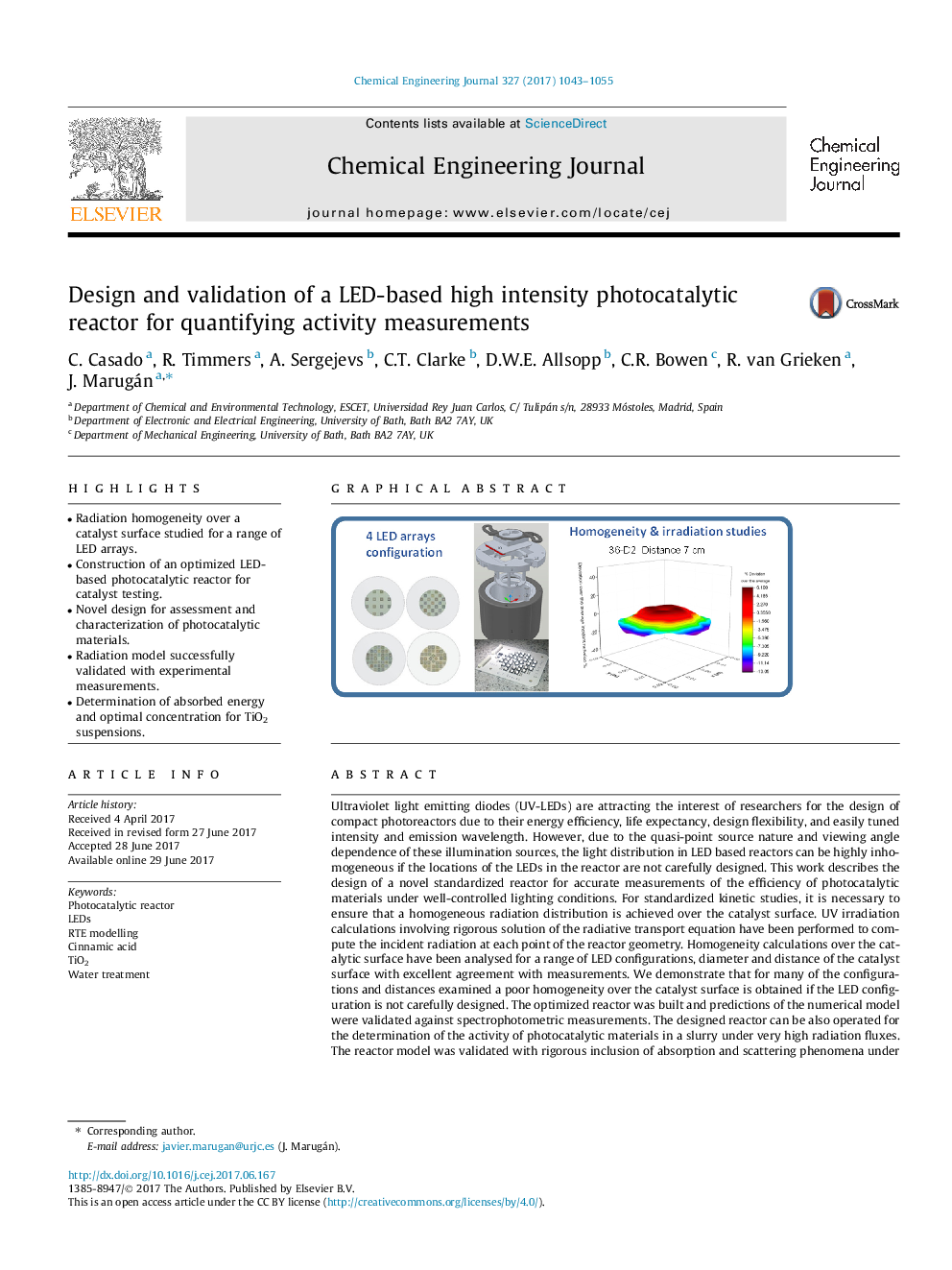| Article ID | Journal | Published Year | Pages | File Type |
|---|---|---|---|---|
| 6465116 | Chemical Engineering Journal | 2017 | 13 Pages |
â¢Radiation homogeneity over a catalyst surface studied for a range of LED arrays.â¢Construction of an optimized LED-based photocatalytic reactor for catalyst testing.â¢Novel design for assessment and characterization of photocatalytic materials.â¢Radiation model successfully validated with experimental measurements.â¢Determination of absorbed energy and optimal concentration for TiO2 suspensions.
Ultraviolet light emitting diodes (UV-LEDs) are attracting the interest of researchers for the design of compact photoreactors due to their energy efficiency, life expectancy, design flexibility, and easily tuned intensity and emission wavelength. However, due to the quasi-point source nature and viewing angle dependence of these illumination sources, the light distribution in LED based reactors can be highly inhomogeneous if the locations of the LEDs in the reactor are not carefully designed. This work describes the design of a novel standardized reactor for accurate measurements of the efficiency of photocatalytic materials under well-controlled lighting conditions. For standardized kinetic studies, it is necessary to ensure that a homogeneous radiation distribution is achieved over the catalyst surface. UV irradiation calculations involving rigorous solution of the radiative transport equation have been performed to compute the incident radiation at each point of the reactor geometry. Homogeneity calculations over the catalytic surface have been analysed for a range of LED configurations, diameter and distance of the catalyst surface with excellent agreement with measurements. We demonstrate that for many of the configurations and distances examined a poor homogeneity over the catalyst surface is obtained if the LED configuration is not carefully designed. The optimized reactor was built and predictions of the numerical model were validated against spectrophotometric measurements. The designed reactor can be also operated for the determination of the activity of photocatalytic materials in a slurry under very high radiation fluxes. The reactor model was validated with rigorous inclusion of absorption and scattering phenomena under highly demanding conditions of high incident radiation intensities. The developed design provides a novel route for quantitative assessment of photocatalytic materials and reactions.
Graphical abstractDownload high-res image (84KB)Download full-size image
